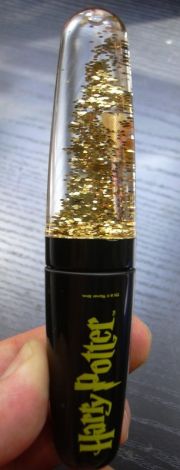
Magic Sticks
Some motes swirl in vortices, others lazily flow to the bottom: we can distinguish laminar and turbulent flows.

The Reynold's number, which links viscosity and velocity of the flow and which serves the purpose of establishing whether the flow is layered (laminar) or turbulent is worked out with the application of the following formula:
where: r - denotes density, v is the velocity of small balls (stars), r - is characteristic linear measurement (e.g. a diameter for a small ball), h - a coefficient of dynamic viscosity.
At Re < 1160 the flow is considered laminar, but at a slightly higher volume it is assumed that it is turbulent. In a magic stick, in spite of the velocity of flow reaching the level of only a few cm per second, quite low value of the viscosity coefficient of the liquid (presumably glycerine) makes Reynolds number 'big', in other words turbulence is bound to occur.
In practice, laminar flows are only those of liquid honey, the water springs out of the tap in a turbulent flow.